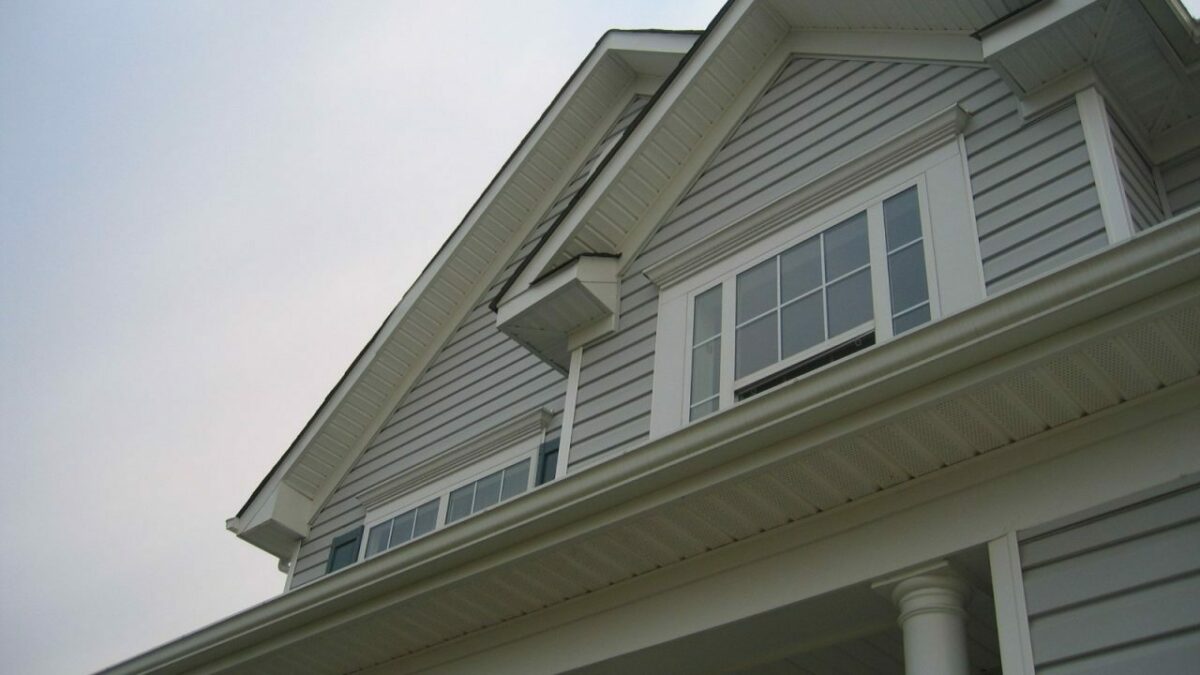Published on: November 14, 2024

If you want to lower your energy expenses and reduce your carbon footprint, energy-efficient siding can help. Learn about your options and how it works to insulate your home and lower your expenses by reducing the amount of time your HVAC system runs.
Siding is a protective material that covers the exterior walls of a building – such as a home, barn or business. The materials you select to side your building will vary based on the aesthetic you prefer, maintenance requirements and your budget.
You have many siding options, but by choosing one that is more energy efficient you can reduce the amount of carbon emissions you contribute to the world by consuming less energy. And you’ll save money in the process.
Here’s what you should look for in energy-efficient siding.
Before deciding that you want energy-efficient siding, review the benefits to see whether it is worth paying the extra cost compared with standard siding.
R-value is a rating that indicates thermal resistance. It tells you how well the material helps retain heat per inch of depth. In most cases, thicker material means a better R-value – but not always. Just because a siding material is thicker doesn’t always mean the manufacturer has done its job in designing a material that will stand up to the elements. That’s why R-values are important.
The higher the R-value, the more effective the siding is at insulating the building. Generally, higher R-value building materials also cost more, which means you’ll need to balance your renovation budget with your long-term energy expenses.
When it comes to selecting energy-efficient siding options, the R-value will be one of the most important elements in your selection process. This will tell you the degree to which your siding protects your home or building from the elements.
Now you need to mix the R-value with other factors, such as:
The R-value for insulated siding tends to be closer to 4 as compared with non-insulated siding, which can be less than 1.
As you begin shopping for the best siding based on your requirements, consider these energy-efficient options.
Insulated vinyl siding includes foam insulation, which helps keep outside temperatures where they belong. This helps reduce energy costs. While it keeps outside air out, it also helps maintain your home’s treated air inside to ensure a cool home in the summer and a warm home in the winter.
It is more expensive than traditional vinyl siding, but also one of the most affordable insulated siding options on the market.
Fiber cement siding is durable and offers the appearance of wood without the maintenance of wood siding. Manufacturers make this material by mixing cement, cellulose fibers and sand together. This makes for a fire-rated material that is durable, harder for pests and weather events to penetrate and very insulating naturally.
The insulated version of fiber cement siding includes a foam insulation layer. One large benefit of using insulated fiber cement siding over insulated vinyl siding is that it offers superb ROI if you have plans to sell your home in the next several years.
However, it is an expensive siding material, averaging nearly $20,000 to re-side a 2,000-square-foot home.
This siding type includes wood fibers, wax and resin to provide the appearance of wood with much simpler maintenance. You also won’t have to worry about warping or pests like you do with true wood.
Engineered wood siding is less energy efficient than insulated vinyl siding but still provides a good option when you want the appearance of wood. The material is lightweight and durable. The setback to engineered wood siding is that it does not stand up well to force, meaning it can crack and chip during hail storms. Those cracks can allow moisture in.
Stucco is good at sealing around the home or building to rival the insulating properties of insulated vinyl siding. Many homeowners like stucco because it is durable, fire-rated and low maintenance. If you can afford stucco as your siding, you’ll enjoy it for decades to come and not have to worry about maintaining it.
When you want additional insulating properties, you can apply foam board insulation and add a synthetic stucco finish over top. The catch with stucco in Washington state is that it is porous. With all the rain in the area, your stucco can absorb water, making it prone to cracks. You’ll need to be ready to have your contractor fix these cracks frequently to avoid problems.
It is also one of the most expensive siding types to install.
One reason steel is energy efficient is because it reflects the sun’s heat. This helps keep the house cooler. When the siding is insulated, it minimizes the amount of air that it allows through, which keeps your treated air where you want it.
Steel is also good at repelling pests as it is durable. You’ll also enjoy minimal maintenance with the siding.
Regardless of the siding on your home or building, it will wear out with time. Some ways to know if it is time for new insulated siding include the following.
The best way to know whether new siding could lower your energy bills is to contact a skilled contractor who can evaluate your current siding and advise as to the life left in it. You don’t want to call upon your HVAC system to compensate for aging siding for long. This puts more strain on this system, which can shorten its life and add to your bills.2FL Windows, Siding and Roofing offers a skilled team that can advise you as to the best energy-efficient material based on your requirements. Schedule your free estimate now to learn more.
Further reading:

Read the latest articles about siding.
